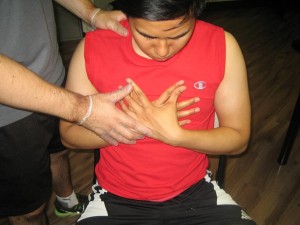An air embolism is defined as a bubble trapped within a blood vessel and blocks it. This can occur among scuba divers who spend a long time underwater, rises to the surface quickly and holds their breath while rising.
https://www.youtube.com/watch?v=HKn9ggti2lw
The air can seep from the lungs into the blood vessels or nitrogen bubbles might form in the blood vessels. Remember that air embolism can result to serious and potentially deadly conditions such as heart attack or stroke.
It is vital to call for emergency assistance if an individual appears sick after scuba diving or air embolism is suspected.
What are the signs?
The indications of air embolism after diving typically include:
- Muscle or joint pain
- Blurry vision
Remember that air embolism can result to serious and potentially deadly conditions such as heart attack or stroke. - Erratic heart rate
- Low blood pressure that can lead to dizziness
- Breathlessness and rapid breathing
- Chest pain
- Itchy skin
- Anxiety
- Bluish-tinged skin (cyanosis)
- Bloody froth from the mouth
- Fits
- Weakness or paralysis in one or several limbs
- Loss of consciousness
These symptoms might not arise abruptly. They might develop within 10-20 minutes or sometimes even longer after rising to the surface. These symptoms should not be ignored and seek medical care right away.
Why diving causes air embolism?
Once a diver rises to the surface rapidly, the nitrogen bubbles form in the tissues and the bloodstream.
Rapid ascent and holding the breath can cause the air that is trapped in the lungs to expand. This can rupture the lung tissue which releases the bubbles into the arterial circulation.
Management
Once a diver with air embolism is given emergency care and his/her condition has stabilized, he/she is transferred to a hyperbaric chamber.
The individual should lie in the chamber for several hours to breathe in a mixture of gases and oxygen in a pressurized environment. The high pressure restores the normal flow of blood and oxygen to the tissues and lowers the size of the air bubbles in the body.
The pressure in the chamber is steadily reduced to allow the gases to leave the body, mimicking the slow surface from a dive. Depending on the seriousness of the symptoms, the treatment might be continued for several days.
Quick Note / Disclaimer
The material posted on this page on air embolism is for learning and educational purposes only. To learn to recognize the signs and how it is managed, register for a first aid and CPR course with Toronto First Aid.

